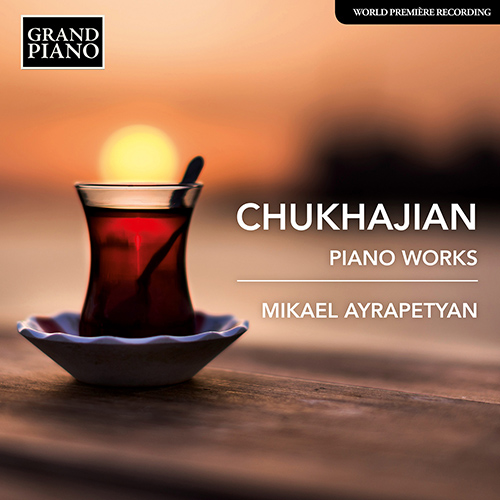
About this Release
“Tigran Chukhajian held an important place in the history of Armenian music. As the largest and most significant Armenian composer of the 19th century, he was known as the ‘Armenian Verdi’ among his contemporaries. But like many Armenian cultural figures who lived under the repressive conditions of Ottoman Turkey, Chukhajian was subjected to persecution and artistic suppression, resulting in his music being largely forgotten until today. The music of Chukhajian is a triumph of the human spirit over the cruel realities he faced during his lifetime, and I am very pleased to be able to share this treasure trove of piano music to music lovers everywhere.” — Mikael Ayrapetyan
CHUKHAJIAN, TIGRAN (1837–1898)
Piano Works
- Mikael Ayrapetyan, piano
Tigran Chukhajian is highly significant in the history of Armenian music: he was the first composer to combine Western and Eastern cultures, and was referred to as the ‘Armenian Verdi’ amongst his contemporaries. Persecution under the repressive Ottoman Turkish regime led to his music being suppressed, but these piano works are a sophisticated testament to Chukhajian’s Romantic inclinations, absorbing the influences of Chopin and Liszt, and enriching them with Oriental nuances and descriptive themes.
This recording was made on a modern instrument: Steinway, Model D. 274
Tracklist
|
1
Impromptu in B-Flat Minor, "Cascade de Couz" (1887) (00:04:17)
|
|
2
Dance Caractéristique in A Minor, "L'Orientale" (1891) (00:05:52)
|
|
3
Grande Valse Fantastique in A Minor, "Illusions" (1888) (00:06:56)
|
|
4
Tarantelle in B-Flat Minor (1887) (00:03:27)
|
|
5
Caprice in E Minor, "La Lyre Orientale" (1894) (00:11:19)
|
|
6
Mazurka de Salon, "Mignon" (1887) (00:04:11)
|
|
7
Une Gavotte de plus in E-Flat Major (1883) (00:03:54)
|
|
8
Polka in F Major, "La gaité" (1892) (00:02:38)
|
|
9
Proti Polka in G Major (1892) (00:02:27)
|
|
10
Funeral March in D Minor (1884) (00:06:49)
|
|
11
Fantaisie Orientale No. 1 in A Minor, "Sur des motifs turcs" (1859) (00:07:27)
|
|
12
Fantaisie Orientale No. 2 in A Minor, "Sur des motifs turcs" (1895) (00:11:55)
|
The Artist(s)
 Mikael Ayrapetyan is a pianist, composer, producer and teacher, as well as a researcher and public figure. He has done much to popularise Armenian classical music all over the world with his Secrets of Armenia musical project, which began during his studies at the Moscow Conservatory. Born in 1984 in Yerevan, Armenia, he studied at the Moscow Tchaikovsky State Conservatory, and continues to uphold the performing traditions of the Russian piano school, of which Konstantin Igumnov, Samuel Feinberg and Lev Oborin are luminaries. His repertoire ranges from the Baroque to the contemporary and includes rarely performed works by Armenian composers. This period was the start of his extensive concert activity in which he performs works by Tigranian, Chukhadjian, Komitas, Melikian, Spendiarian, Barkhudarian, Stepanian, Khachaturian, Babajanian, Arutyunian, Abrahamian, Bagdasarian, Avetisian, Mirzoyan, Amirkhanian and many other Armenian composers, which eventually led him to produce his own concerts. He was awarded the State Prize of the Republic of Armenia for his outstanding contribution to the development and popularisation of Armenian classical music.
Mikael Ayrapetyan is a pianist, composer, producer and teacher, as well as a researcher and public figure. He has done much to popularise Armenian classical music all over the world with his Secrets of Armenia musical project, which began during his studies at the Moscow Conservatory. Born in 1984 in Yerevan, Armenia, he studied at the Moscow Tchaikovsky State Conservatory, and continues to uphold the performing traditions of the Russian piano school, of which Konstantin Igumnov, Samuel Feinberg and Lev Oborin are luminaries. His repertoire ranges from the Baroque to the contemporary and includes rarely performed works by Armenian composers. This period was the start of his extensive concert activity in which he performs works by Tigranian, Chukhadjian, Komitas, Melikian, Spendiarian, Barkhudarian, Stepanian, Khachaturian, Babajanian, Arutyunian, Abrahamian, Bagdasarian, Avetisian, Mirzoyan, Amirkhanian and many other Armenian composers, which eventually led him to produce his own concerts. He was awarded the State Prize of the Republic of Armenia for his outstanding contribution to the development and popularisation of Armenian classical music. The Composer(s)
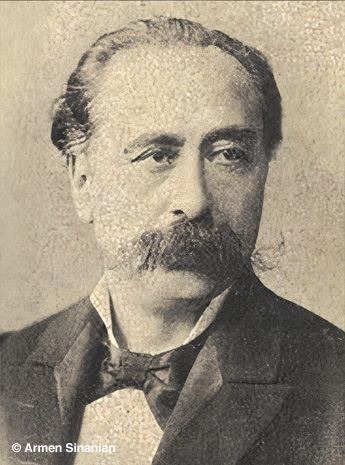 Tigran Chukhajian (also known as Dikran Tchouhadjian or Çuhacıyan) held an important place in the history of Armenian music. He was the first Armenian musician to receive a professional European education; he was the first composer to find ways to bring together the musical cultures of the West and East; and was also the first to bring Eastern idioms to the genres of opera, symphony and chamber music.
Tigran Chukhajian (also known as Dikran Tchouhadjian or Çuhacıyan) held an important place in the history of Armenian music. He was the first Armenian musician to receive a professional European education; he was the first composer to find ways to bring together the musical cultures of the West and East; and was also the first to bring Eastern idioms to the genres of opera, symphony and chamber music. Reviews
“Ayrapetyan is top notch and is able to communicate both the playful and serious moods in this repertoire.” – American Record Guide

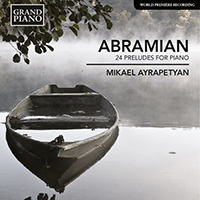
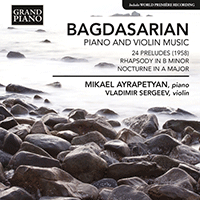
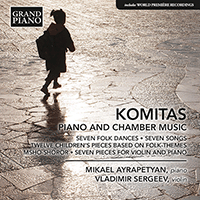
 Grand Piano has gained a reputation for producing high quality recordings of rare keyboard gems. Dedicated to the exploration of undiscovered piano repertoire, the label specialises in complete cycles of piano works by many lesser-known composers, whose output might otherwise have remained unknown and unrecorded.
Grand Piano has gained a reputation for producing high quality recordings of rare keyboard gems. Dedicated to the exploration of undiscovered piano repertoire, the label specialises in complete cycles of piano works by many lesser-known composers, whose output might otherwise have remained unknown and unrecorded.






